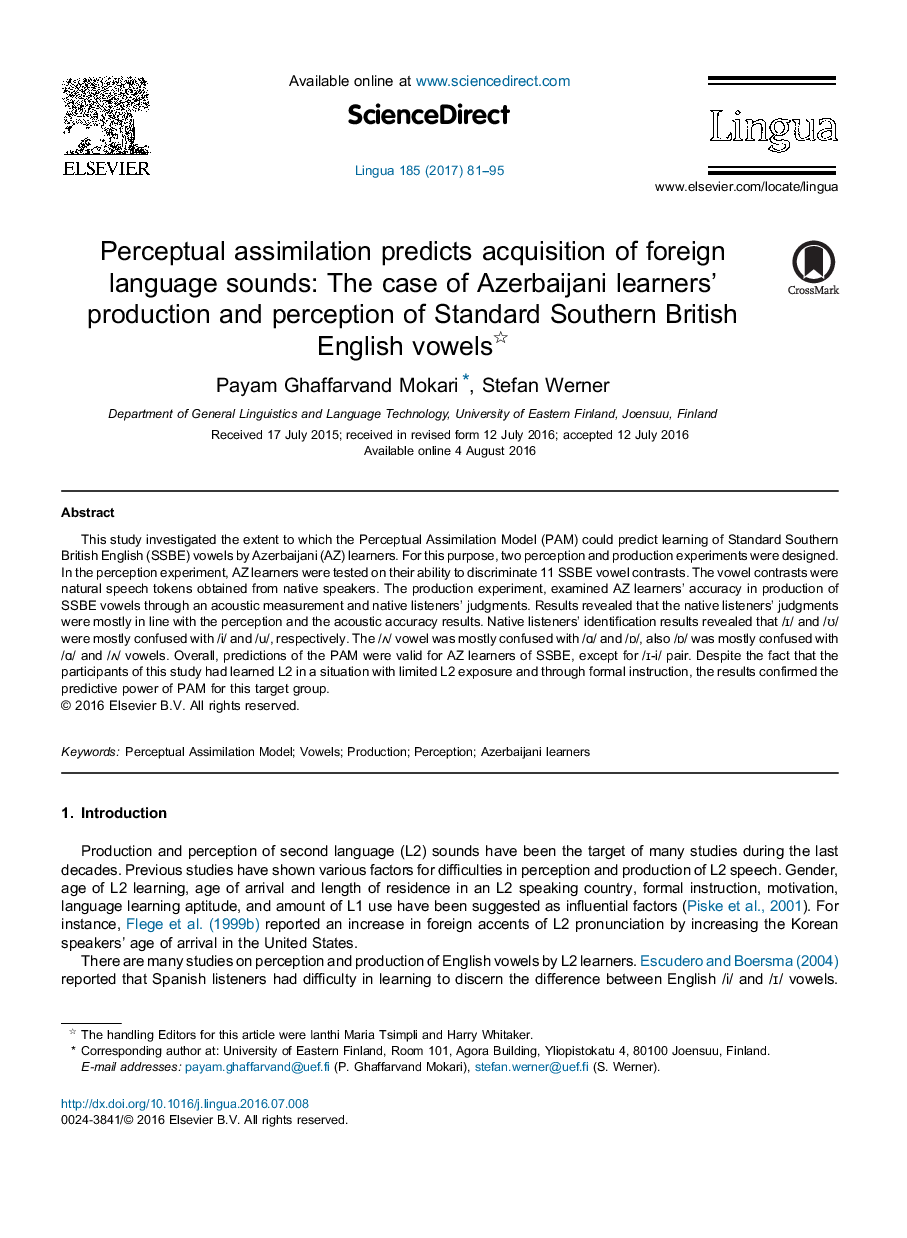| Article ID | Journal | Published Year | Pages | File Type |
|---|---|---|---|---|
| 5043066 | Lingua | 2017 | 15 Pages |
â¢Perceptual Assimilation Model's predictions were mostly confirmed.â¢No significant correlation was found between production and perception.â¢Poor discrimination of English /Ê-É/, /É-Ê/, /Ê-u/ and /É-É/ pairs was observed.
This study investigated the extent to which the Perceptual Assimilation Model (PAM) could predict learning of Standard Southern British English (SSBE) vowels by Azerbaijani (AZ) learners. For this purpose, two perception and production experiments were designed. In the perception experiment, AZ learners were tested on their ability to discriminate 11 SSBE vowel contrasts. The vowel contrasts were natural speech tokens obtained from native speakers. The production experiment, examined AZ learners' accuracy in production of SSBE vowels through an acoustic measurement and native listeners' judgments. Results revealed that the native listeners' judgments were mostly in line with the perception and the acoustic accuracy results. Native listeners' identification results revealed that /ɪ/ and /Ê/ were mostly confused with /i/ and /u/, respectively. The /Ê/ vowel was mostly confused with /É/ and /É/, also /É/ was mostly confused with /É/ and /Ê/ vowels. Overall, predictions of the PAM were valid for AZ learners of SSBE, except for /ɪ-i/ pair. Despite the fact that the participants of this study had learned L2 in a situation with limited L2 exposure and through formal instruction, the results confirmed the predictive power of PAM for this target group.
